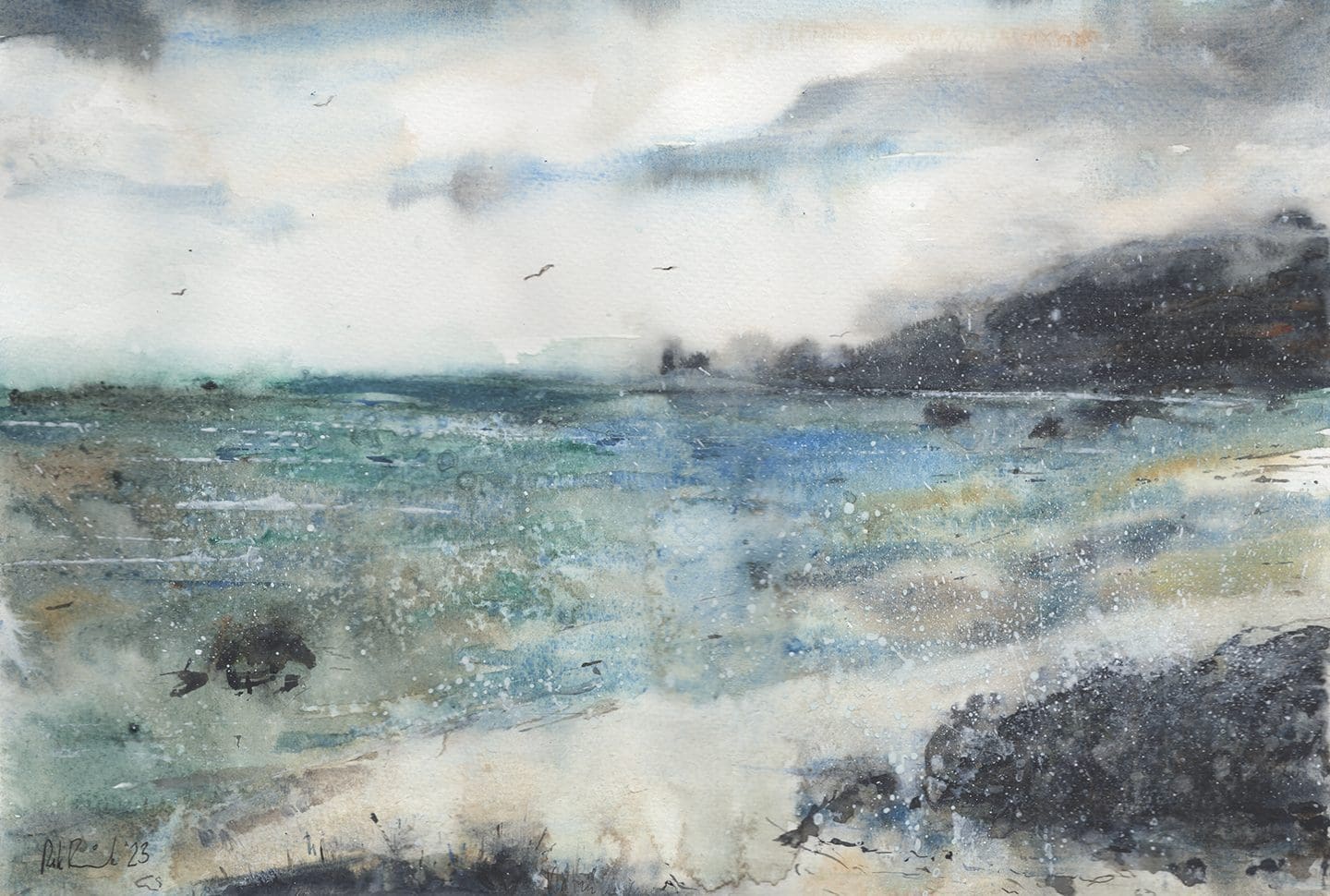My Journal
How to Licence Your Art for Commercial Use
Learn how to licence your artwork for commercial use in this comprehensive guide. From paintings to packaging design, discover the benefits, considerations, and steps involved in licensing your art for profit..
Art licensing refers to the process of granting permission for the use of an artist’s creative work, such as paintings, linocut prints, icons & illustrations. Through licensing, an artist or graphic designer can monetise their creative talents and generate additional revenue.
Licensing is an essential aspect of the business of art, as it enables artists and graphic designers to commercialise their artwork and protect their intellectual property rights.
By licensing their artwork, artists and graphic designers can reach a wider audience and build brand recognition, while also ensuring that their work is used in accordance with their terms and conditions.
This article will provide an overview of art licensing and the various steps involved in licensing artwork. It will also cover the requirements for licensing artwork in the UK, the factors that affect pricing for artwork licensing, and the importance of copyright considerations when selling art.
How to licence your artwork
Definition of Licensing
Licensing involves granting permission to use an artist’s creative work in exchange for compensation. The licence agreement outlines the terms and conditions of the use of the artwork, including the duration of the licence, the usage rights granted, and the compensation to be paid.
Benefits of Licensing Artwork
Licensing artwork offers several benefits to artists and graphic designers, including the ability to generate additional revenue, reach a wider audience, and build brand recognition. It also allows the artist or graphic designer to retain ownership of their intellectual property and maintain creative control over their work.
Steps to Licensing Artwork
- Determine Usage Rights and Compensation
The first step in licensing artwork is to determine the intended use of the artwork and the compensation to be paid for its use. The licensor and licensee should agree on the usage rights granted, such as whether the artwork will be used for merchandising, packaging design, or other commercial purposes. - Draft a licence Agreement
The licence agreement should be drafted to specify the terms and conditions of the use of the artwork. It should include details such as the duration of the licence, the usage rights granted, the compensation to be paid, and any quality control measures that need to be followed. - Negotiate and Finalise the Agreement
The licensor and licensee should negotiate the terms and conditions of the licence agreement to ensure that both parties are satisfied with the terms. Once the terms have been agreed upon, the licence agreement should be finalised and signed by both parties. - Grant Permission and Receive Payment
Once the licence agreement has been signed, the licensor can grant permission for the use of the artwork, and the licensee can make the agreed-upon payment.
Key Considerations When Licensing Artwork
- Intellectual Property Rights
Artists and graphic designers should be aware of their intellectual property rights and ensure that they retain ownership of their work. They should also ensure that the licence agreement includes provisions for the protection of their intellectual property rights. - Quality Control
The licensor should establish quality control measures to ensure that the artwork is used in accordance with their specifications. This may include requiring approval of the final product before it is released. - Termination Rights
The licence agreement should include provisions for termination, such as in the event of a breach of the agreement by either party. - Liability and Indemnification
The licence agreement should include provisions for liability and indemnification, outlining the responsibilities of both parties in the event of any legal disputes.

BRANDING & WEBSITE DESIGN FOR ARTISTS, MAKERS and Creative artisans
Empower your creative business with my own crafted e-commerce solutions and personalised branding services designed to help sell your work whilst elevating your artistic presence online.
How to Get Your Artwork Recognised
Importance of Promoting Your Artwork
Promoting your artwork is an essential aspect of getting your work recognised and building a reputation as an artist or graphic designer.
Ways to Get Your Artwork Recognised
- Building a Portfolio
Building a portfolio is an effective way to showcase your artwork to potential clients and employers. A well-designed and organised portfolio can demonstrate your creativity and technical skills and make a strong impression on potential clients. - Participating in Art Shows and Exhibitions
Participating in art shows and exhibitions can help you to gain exposure and recognition for your work. It also provides an opportunity to network with other artists and industry professionals. - Networking with Other Artists and Designers
Networking with other artists and designers can help you to stay up-to-date with industry trends and opportunities. It can also lead to potential collaborations and partnerships. - Using Social Media and Online Platforms
Social media and online platforms offer a convenient and cost-effective way to promote your artwork and connect with potential clients and fans. Platforms such as Instagram, TikTok, Behance, and Pinterest are popular among artists and graphic designers.
Strategies for Successful Promotion and Recognition
To be successful in promoting your artwork, it is important to develop a clear strategy and to be consistent in your efforts. Some strategies to consider include:
- Identifying your target audience and tailoring your marketing efforts to their preferences and interests
- Creating engaging and visually appealing content that showcases your artwork and personality
- Collaborating with other artists and designers to create a wider network and reach a larger audience
- Using data and analytics to track the effectiveness of your marketing efforts and adjust your strategy as needed
Licensing Requirements for Selling Art in the UK
Overview of Licensing Requirements for Artists in the UK
In the UK, artists and graphic designers must adhere to various legal and regulatory requirements when licensing their artwork. These include complying with copyright laws and ensuring that their licence agreements are fair and transparent.
Differences Between Copyright and Licensing
Copyright refers to the legal protection granted to the creator of an original work, such as a painting or graphic design. Licensing, on the other hand, refers to the process of granting permission for the use of the copyrighted work.
Understanding the Legal and Regulatory Landscape
Artists and graphic designers should be aware of the legal and regulatory landscape when licensing their artwork in the UK. This includes understanding copyright laws and regulations, complying with fair use and fair dealing provisions, and ensuring that their licence agreements are fair and transparent.
Key Considerations for Licensing Artwork in the UK
When licensing artwork in the UK, artists and graphic designers should consider factors such as intellectual property rights, quality control, termination rights, and liability and indemnification. It is also important to ensure that licence agreements comply with UK laws and regulations.
Royalties for Art Licensing
Definition of Royalties
Royalties refer to the compensation paid to the licensor for the use of their artwork. Royalties can be paid as a percentage of the revenue generated by the use of the artwork or as a flat fee.
How Royalties are Calculated
Royalties are typically calculated as a percentage of the revenue generated by the use of the artwork. The percentage can vary depending on factors such as the type of artwork, the intended use of the artwork, and the negotiation between the licensor and licencee.
Average Royalty Rates for Different Types of Artwork
The average royalty rates for different types of artwork can vary widely depending on the intended use of the artwork. For example, the royalty rate for a painting used in a merchandising campaign may be higher than the royalty rate for a graphic design used in a magazine advertisement.
Factors that Affect Royalty Rates
Factors that can affect royalty rates include the popularity and demand for the artwork, the scope of the licence, and the competition in the market.


Licensing Your Artwork in the UK
Overview of the Licensing Process in the UK
The process of licensing artwork in the UK involves several steps, including determining usage rights and compensation, drafting a licence agreement, negotiating and finalising the agreement, and granting permission and receiving payment.
Steps to Licensing Your Artwork
- Determine Usage Rights and Compensation
The licensor and licensee should agree on the usage rights granted, such as whether the artwork will be used for graphic design, packaging design, or other commercial purposes. They should also agree on the compensation to be paid for the use of the artwork.
- Draft a licence Agreement
The licence agreement should be drafted to specify the terms and conditions of the use of the artwork. It should include details such as the duration of the licence, the usage rights granted, the compensation to be paid, and any quality control measures that need to be followed.
- Negotiate and Finalise the Agreement
The licensor and licensee should negotiate the terms and conditions of the licence agreement to ensure that both parties are satisfied with the terms. Once the terms have been agreed upon, the licence agreement should be finalised and signed by both parties.
- Grant Permission and Receive Payment
Once the licence agreement has been signed, the licensor can grant permission for the use of the artwork, and the licensee can make the agreed-upon payment.
Key Considerations When Licensing Artwork in the UK
When licensing artwork in the UK, artists and graphic designers should consider factors such as intellectual property rights, quality control and approval process, termination rights, and payment terms. It is also important to ensure that licence agreements comply with UK laws and regulations.


Should You licence Your Artwork?
Pros and Cons of Licensing Artwork
Licensing artwork offers several advantages, such as the ability to generate additional revenue and build brand recognition. However, it also involves some risks, such as the potential loss of creative control and the risk of infringing on intellectual property rights.
Factors to Consider Before Licensing Your Artwork
Before licensing your artwork, it is important to consider factors such as your goals and objectives, your creative vision, your comfort level with licensing, and the potential risks and benefits.
Alternatives to Licensing Your Artwork
There are several alternatives to licensing your artwork, such as selling your artwork directly, collaborating with other artists and designers, or offering commissioned work.
Pricing for Licensing Artwork
Factors that Affect Pricing
Several factors can affect the pricing for licensing artwork, including the type of artwork, the intended use of the artwork, the competition in the market, and the negotiation between the licensor and licensee.
Different Pricing Models for Artwork Licensing
Different pricing models can be used for artwork licensing, such as flat fee pricing, royalty-based pricing, and usage-based pricing.
Examples of Pricing for Different Types of Artwork
The pricing for different types of artwork can vary widely depending on the intended use of the artwork. For example, the pricing for a linocut print used in a packaging design project may be different from the pricing for a painting used in a merchandising campaign.


Copyright Considerations for Selling Art
Definition of Copyright
Copyright refers to the legal protection granted to the creator of an original work, such as a painting or graphic design.
How Copyright Protects Artwork
Copyright protects artwork by granting the creator exclusive rights to reproduce, distribute, and display the work. It also provides a legal remedy in the event of any infringement on these rights.
Steps to Copyrighting Your Artwork
To copyright your artwork, you must register your work with the relevant copyright office and comply with any applicable laws and regulations.
When to Consider Copyrighting Your Artwork
Artists and graphic designers should consider copyrighting their artwork when they want to protect their creative works from unauthorised use and infringement. Copyright registration can also help to establish proof of ownership and may provide legal remedies in the event of any disputes or infringements.
Conclusion
Recap of the Main Points
Art licensing can be a valuable tool for artists and graphic designers to generate additional revenue and build brand recognition. However, it is important to consider the potential risks and benefits before licensing your artwork, and to ensure that licence agreements comply with applicable laws and regulations.
If you are an artist or graphic designer, consider exploring the option of licensing your artwork to generate additional revenue and build your brand. However, be sure to consider the potential risks and benefits, and to ensure that your licence agreements comply with applicable laws and regulations.
In addition to licensing your artwork, consider exploring other options for selling your art, such as selling your artwork directly or collaborating with other artists and designers. By diversifying your revenue streams and exploring different avenues for selling your art, you can increase your chances of success and build a sustainable career in the creative industry.
Remember to also consider copyrighting your artwork to protect your creative works from unauthorised use and infringement. Copyright registration can help to establish proof of ownership and may provide legal remedies in the event of any disputes or infringements.
Overall, art licensing and selling can be a rewarding and lucrative career path for artists and graphic designers. By following the steps and considerations outlined in this article, you can successfully licence your artwork and build a sustainable career in the creative industry.
Further reading
10 Tips for Building a Successful Art Business
– a blog post on how to build a successful art business by Artsy Shark.
Copyright Basics for Artists
– an article by Art Law Journal that explains the basics of copyright law for artists.
The best places to sell design online
– a comprehensive guide on how to sell your art online by Creative Bloq.
Published
Last Updated



Download my image license template?
Here is my example Image License which you can use to base your own license on. Please note this should not be considered as legal advice and I recommend you seek legal help before entering into a license agreement.
GET IN TOUCH





